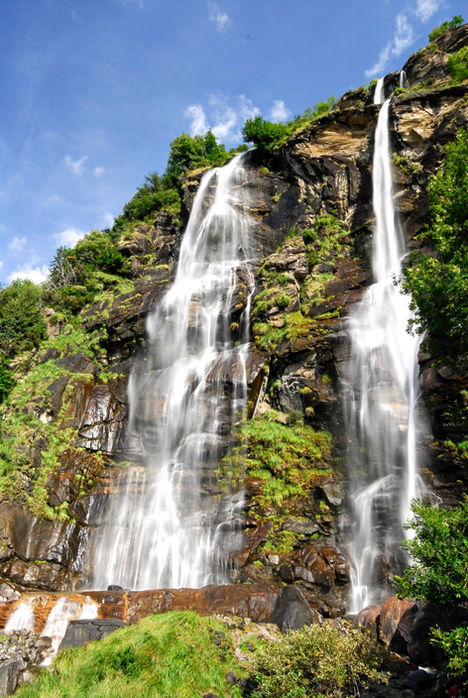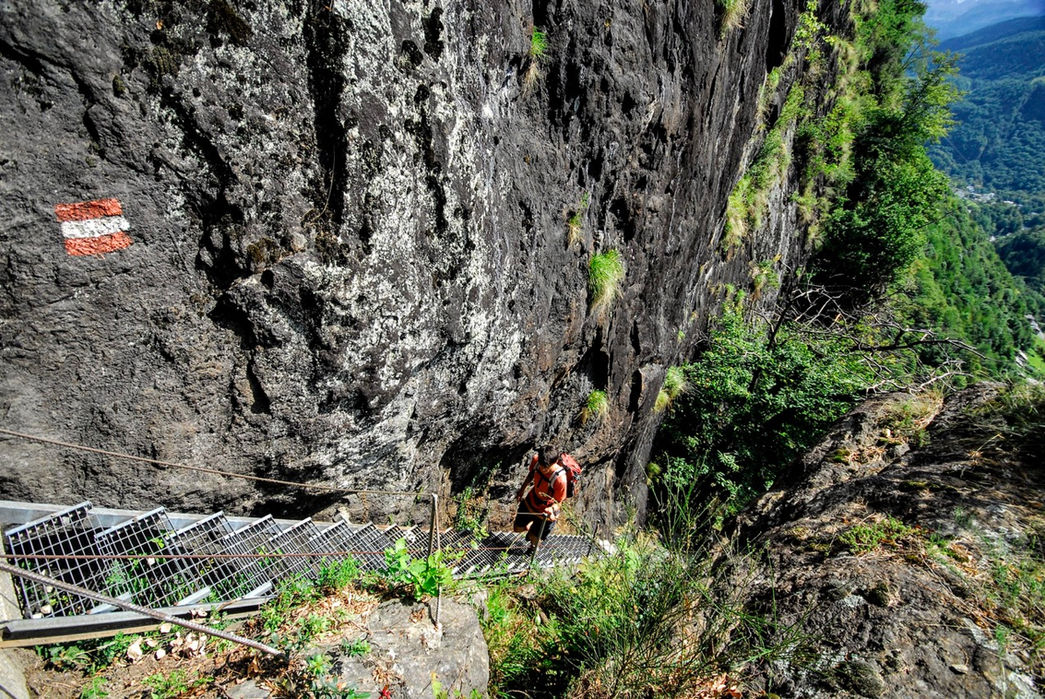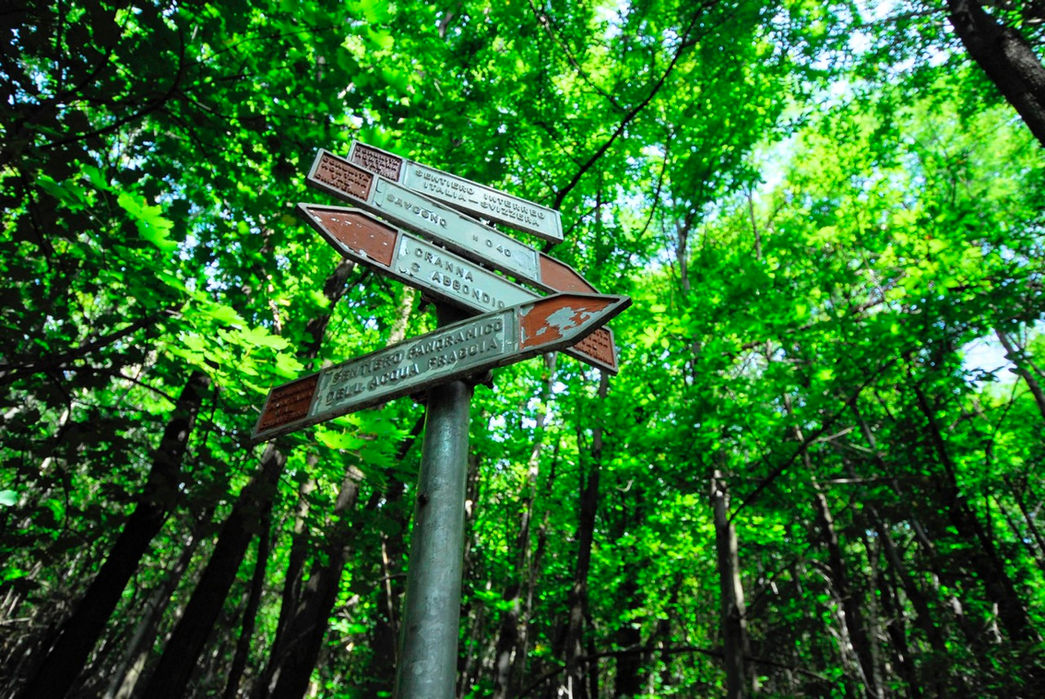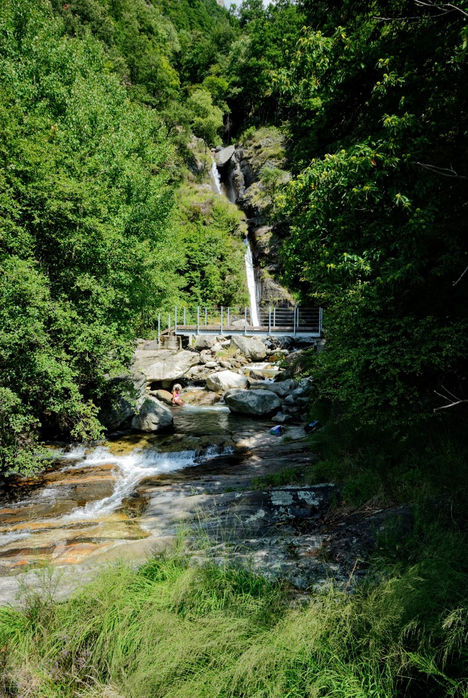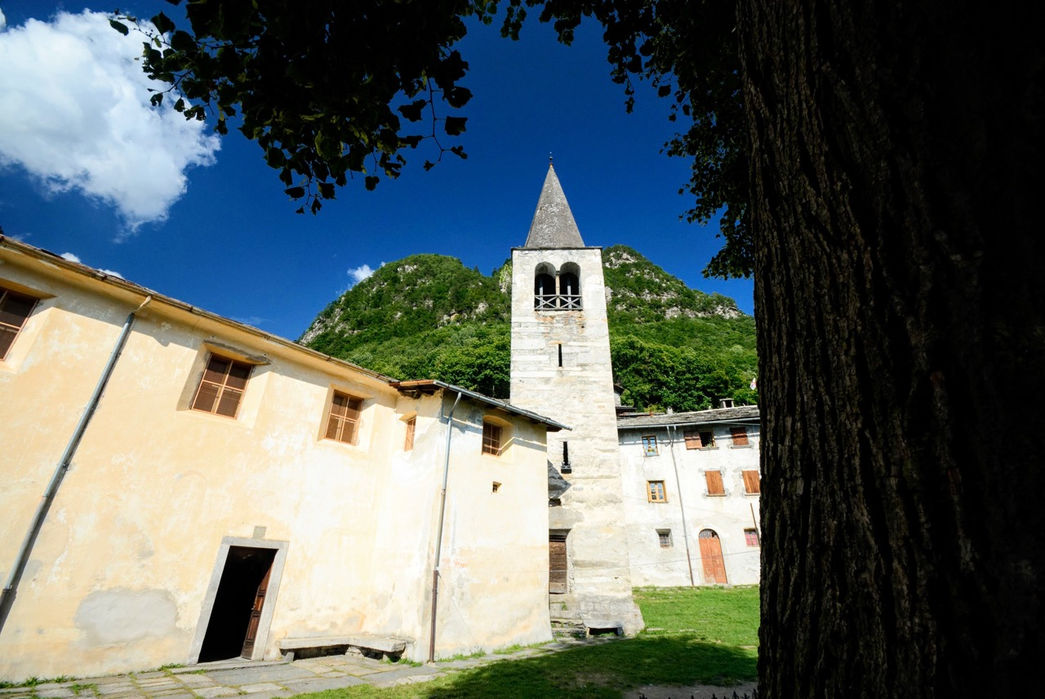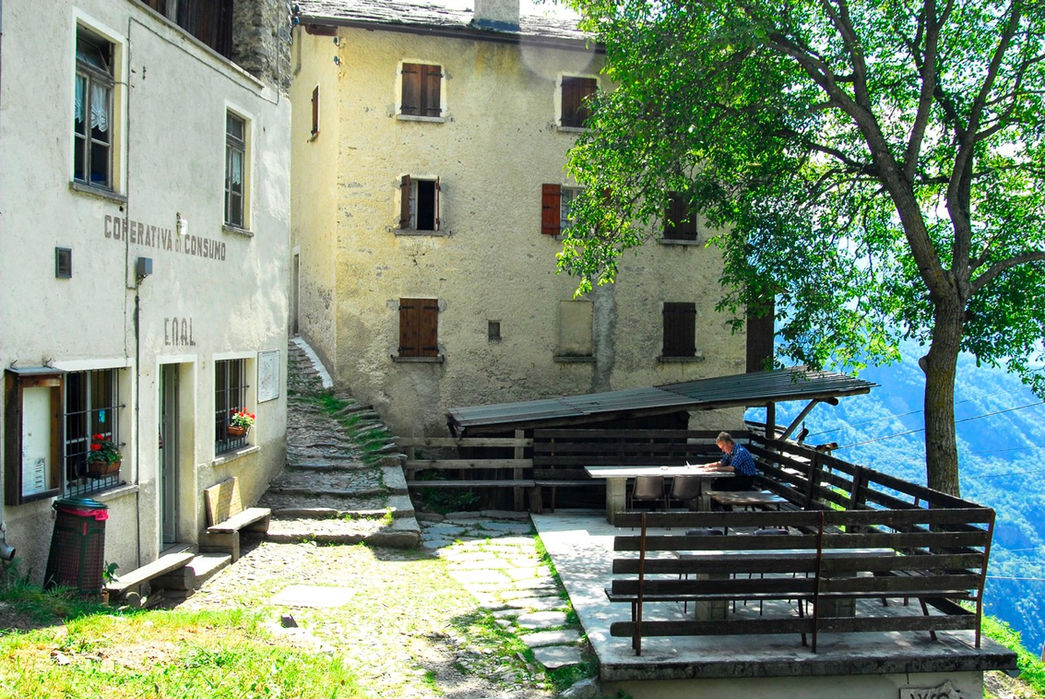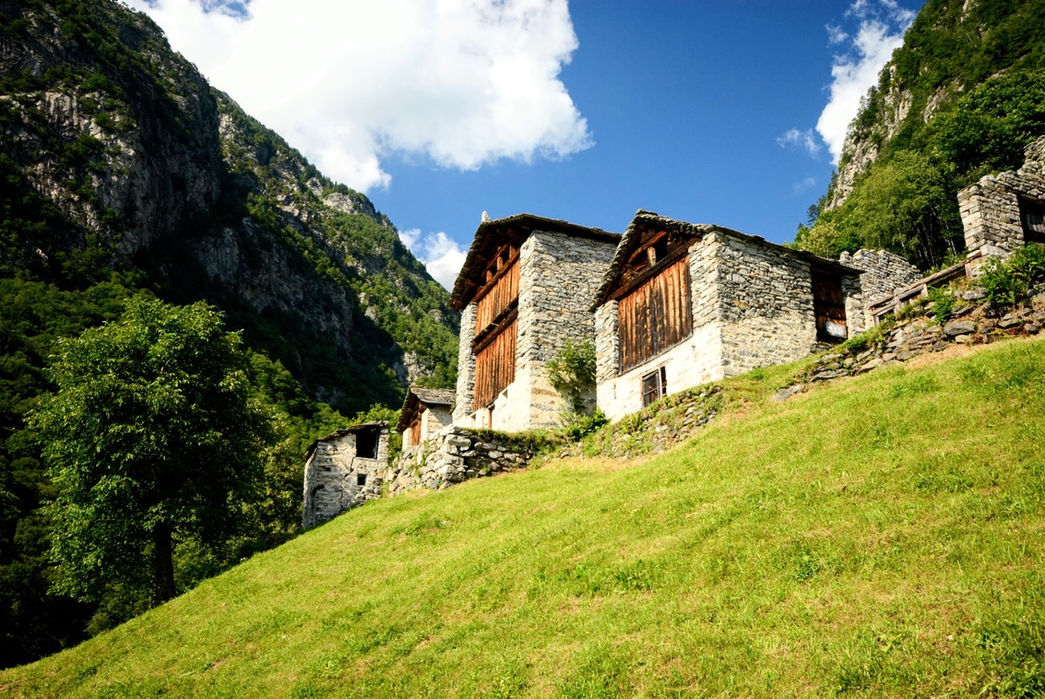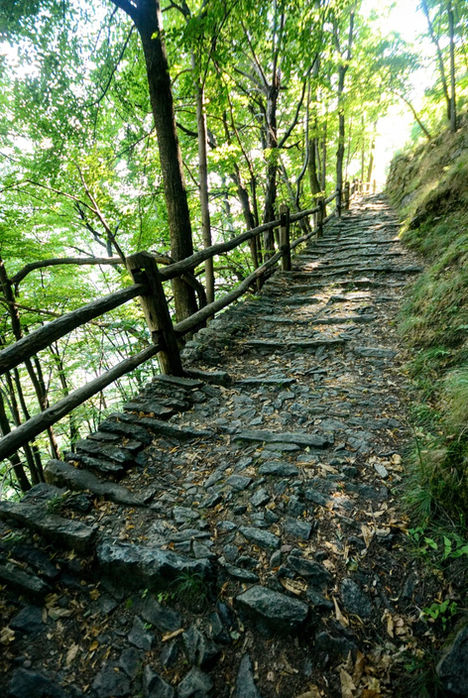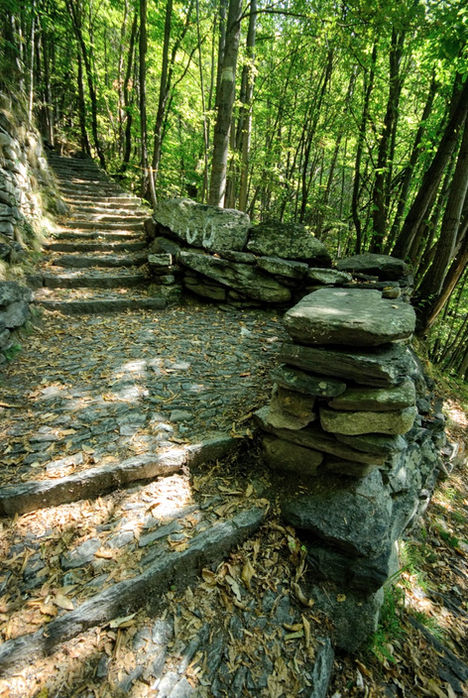T
3:00 h
5.5km
620
8
THE HIKE
Short half-day excursion, ideal for families and for fall/winter/spring hikes, considering the low altitude. A short hike, but rich in natural and cultural wonders: first the Acquafraggia Waterfalls, which we'll be able to admire from below, from the sìde, and from above, with a fun path equipped with iron stairs; then Savogno and Dasile, two clusters of houses inhabited all year round (at least for now, and among the few Alpine villages to still be inhabited all year round); and finally we descend along the beautiful Savogno mule track, stopping at ancient tanks and a press.
The Acquafraggia Waterfalls
We park near the Acquafraggia waterfalls (m446) in Borgonovo di Piuro. The waterfalls are populated by hordes of tourists and locals - after all, Leonardo da Vinci even mentions them in the Codex Atlanticus ("up this river there are waterfalls of water of 400 fathoms which are beautiful to see"), so who are we to not go there?

The waterfall is a beautiful double drop of 200 metres, but it is better to go there after a few days of rain, when the water flow is at its maximum and the name "Acquafraggia" ("Acqua Fracta" in Latin, which means "agitated waters, interrupted by waterfalls") reveals its own meaning — in dry periods, the waterfall is reduced to a veil of water.

On the outward journey we take the waterfall path, which climbs with easy metal ladders onto the rocky step from which the waterfalls fall. Detours in the woods allow us to overlook the two drops of the waterfall, admiring the force of the water hitting the rock. The waterfall sprays such a quantity of water that a microclimate has even been created around the waterfalls — for example, this is the northernmost point in Europe where the fern Pteris Cretica grows.
Having reached the top of the waterfall, we cross the Acquafraggia stream and follow it on the orographic right. We climb over it again higher up near a beautiful pool of water with a "cigarette" waterfall, and then join the mule track leading to Savogno (m932, 1.15 hours).
Savogno and Dasile
Savogno and Dasile are two Lilliputian Alpine villages, still with an active life of their own. Savogno, the more beautiful of the two, is dominated by a beautiful church, supported by a buttress that acts as a balcony. Until the 1950s Savogno was still densely inhabited, so much so that it had an elementary school. In the following years, however, the town became depopulated - and with it the school - which was then renovated and used as a refuge (the Savogno Refuge, open all year round).
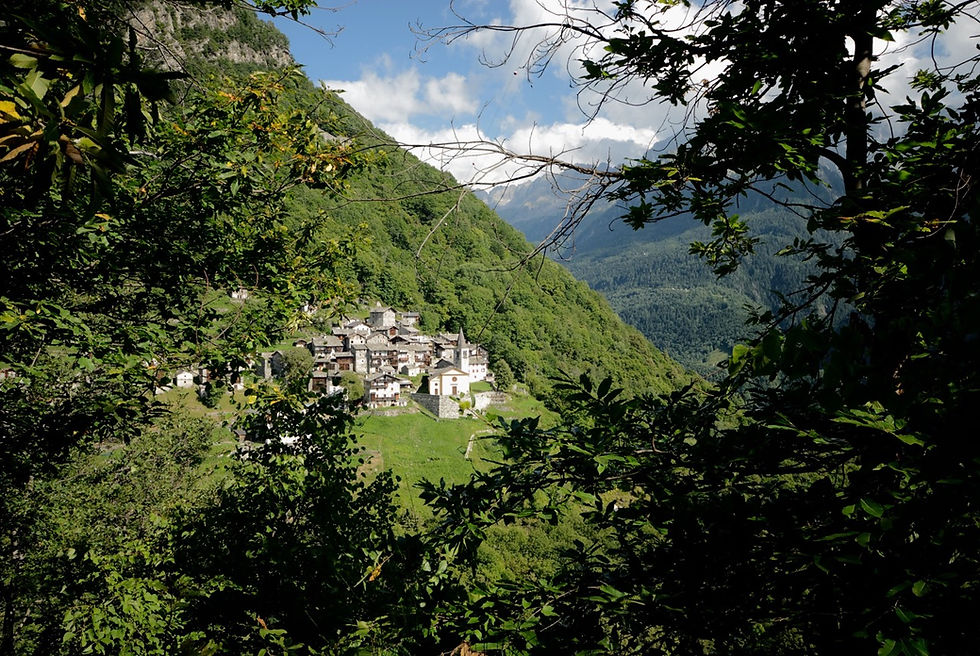
From Savogno we can continue, still on a beautiful mule track, on the opposite side of Acquafraggia up to Dasile (1032 m, 30 minutes), slightly smaller but with a larger lawn where you can roast in the sun. We then return to Dasile along the same path (20 minutes).
The historic mule track of Savogno and the 18th century press
For the descent we can take the historic mule track of Savogno, made up of 3000 paved steps, cut in a zigzag pattern through the woods. Almost in the valley, we first find a beautiful fountain with 3 basins, and then an area of ancient terraces for the cultivation of vines, now semi-hidden in the chestnut forest. Further proof that good wine was once made here is a wine press from the 1700s in one of the ruined farmhouses.

From here, in a few minutes we return to the car (45 minutes).
The Piuro landslide of 1618
If you're wondering why Borgonovo di Piuro is called that (Borgonovo means "New town"), there's a reason and it's not a nice story. Today's village is "new". In fact, the original town of Piuro was razed to the ground by a huge landslide on 4 September 1618 - 3 million cubic meters of earth detached from the northern slopes of Monte Conto (here is a computer simulation of the disaster). All the inhabitants of the town, around 1000, died, making headlines throughout Europe.

MAP
EQUIPMENT
The mountains are a dangerous environment: make sure you always have the right equipment — hiking or trail shoes, warm clothes and waterproofs in case of unexpected changes in weather conditions, a small emergency kit.
I've made an Amazon "shopping note" to make sure you have everything — ps if you buy from these links, 3% goes to support the development and maintenance of Hikes of the World 🙏.
-
Breathable t-shirt ( example )
-
Sweatshirt, fleece, or light jacket
-
Waterproof windbreaker (for example: men / women )
-
Gloves and hat (you never know)
-
Backpack with rain cover
-
Trekking poles (not essential, but they help to unload the weight of the backpack and ease the impact on the joints)
-
Trekking or trail running shoes (in great vogue lately because they are lightweight. These Salomon ones - for men and women - are an excellent entry-level, preferably Gore-Tex)
-
For via ferratas: complete via ferrata kit (I have this one , very light and compact, with this harness and helmet — or you can buy complete kits ). Buy in store to receive ad hoc support
-
To sleep a night in a refuge: sheet or light sleeping bag
-
Water bottle or thermos
-
Light crampons if you think you will find ice or snow on the route
-
Power bank or cell phone charger
-
Camera
-
Drone, for those who love to "fly" (used in moderation and at a distance from other people. I have had the DJI Mini 2 for over 2 years and have found myself very happy with it. The DJI Mini 3 also allows you to take vertical photographs)
-
Small emergency kit ( example )
-
Sun cream (essential)
-
Sunglasses


